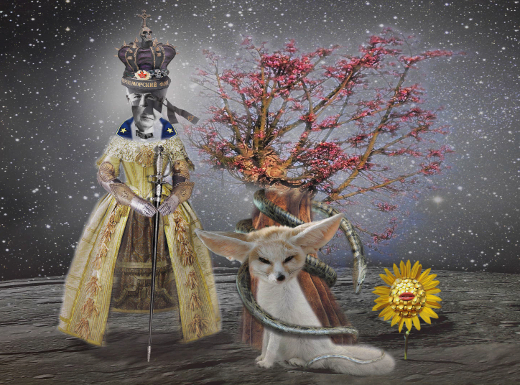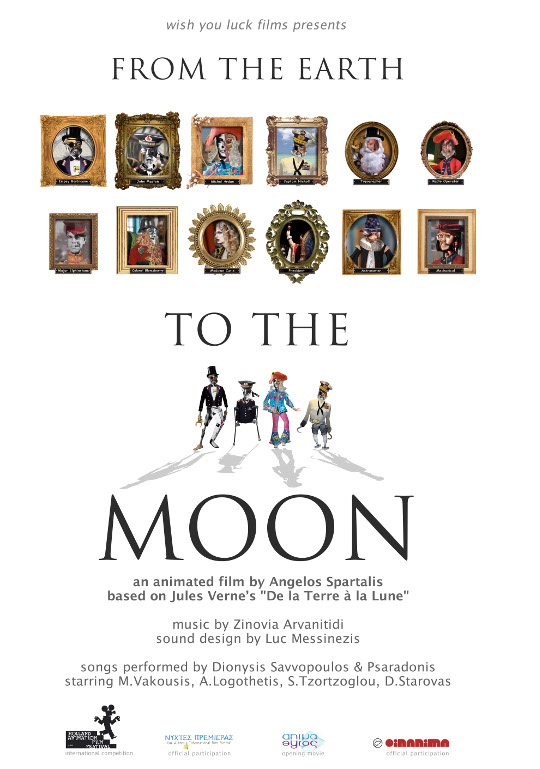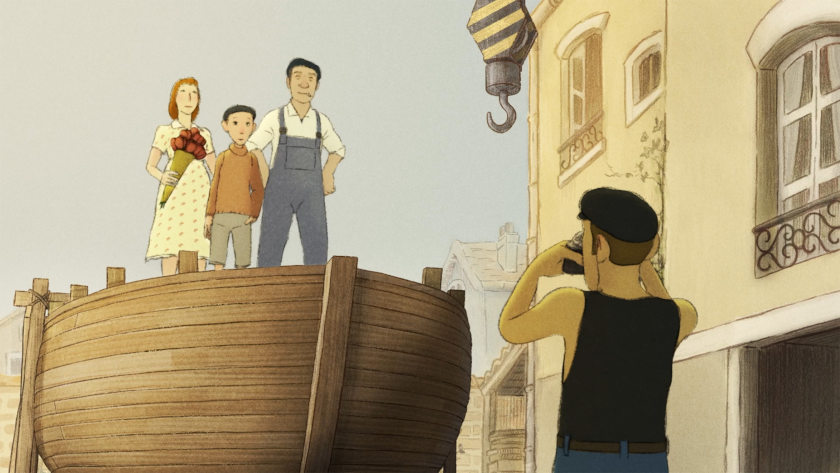From the Earth To the Moon Review: Warm Collage of Human Folly

The animated adaptation of Jules Verne's 1865 sci-fi fantasy comes neither from US nor from France, Verne' native country.
The economical crisis that has befallen the Greek economy seems to have done miracles in its cinematic output. And even if this is not another instance of the celebrated Greek weird wave, Spartalis' collage animation and loose adaptation of Verne's novel becomes a warm (if slender at times) reminder of the militaristic demeanor.
The film starts in 1969, with the perennial anti-establishment couple of Bonnie and Clyde as commentators of Niel Armstrong's moon voyage. From the Earth to the Moon moves swiftly 100 years before that, in order to canvass the idea of American war mongers bored of the peace in the American continent. Their new plan is a manned cannon projectile that will reach the moon.
Artillery commander Barbicane convinces the celebratory audience of The Beatles' Sergeant Peppers (one of the many intended anachronisms in the film) to finance the plan, and, scientific problems aside, the mission is set. Yet in France, Michel Ardan, another war pioneer, has the same plan. Their roads will cross in Florida, where both men need to plan their new, extraterrestrial destiny.
Less anarchic than it initially seems, Spartalis' adaptation is intended as an ordinary anti-militarist satire, but in fact it shares the enchantment with scientific numbers and technical details that its main characters crave for. In a project that no representatives of the capitalist elite are invited, the military men are unexpectedly warm and tender. Their petty bickering (and the perennial conflict with naval commander Nicholl) only makes the main characters a nostalgic, fragile specimen of the human folly, entertaining but never distanced.
The film's songs (sung with gusto by Greek artists Dionysis Savvopoulos and Psaradonis) only promote what we always seemed to know; that human curiosity and not just the need for wartime situation is the main incentive that can even lead to self-sacrifice.
Not all jokes and episodes work in the film. The funny Greek regional accents which accompany non-Greek surroundings are lost in English subtitles, and the vulgarity of Maston is too blunt to register.
Without offering a narrative climax, the film is a series of episodes and problems that Barbicane and Ardan encounter in their effort, and could have benefited from editing (especially the uninspired Mayor of Tampa Town sequence). Many characters are vying for attention, and if you look closely, you may see remnants of the Inspector Gadget series as well.
The collage technique Spartalis uses (75.000 photographs that took 5 years to assemble and present in this feature) feels appropriately mechanic for handicapped representatives of the war machine, but at times too calculated and celebrity-ridden.
That is why the almost surreal night sequences in the film, magnificently lit, offer a welcome alternative -and be sure not to miss Superman and the seven dwarfs diving into the same well.
Spartalis seems to object to the current production model of US animation as well, as the fate of the Scrat-looking squirrel clearly suggests. Yet, despite the daring nature and motivation for his project (which makes the film look too didactic at times), From the Earth to the Moon still leaves a warm feeling familiar to the current studio animation output (even if all film personnel were volunteers). And this is intended as a compliment.
Vassilis Kroustallis









